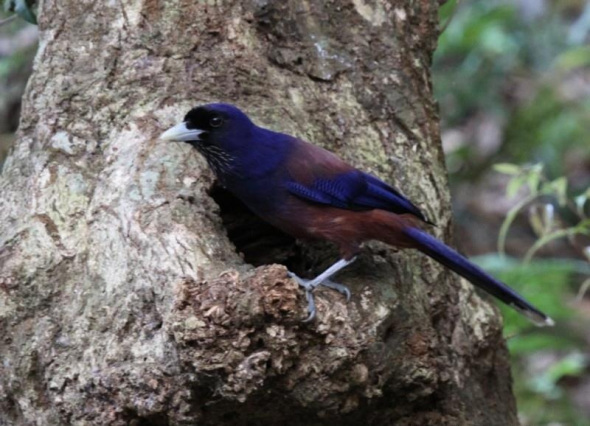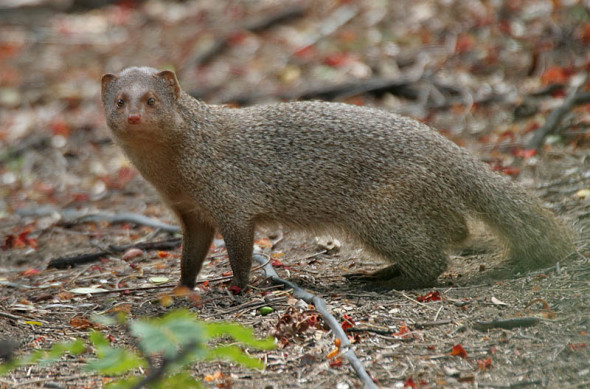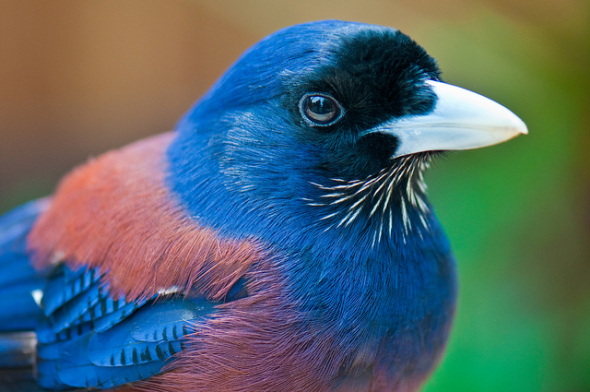Environmentalism chapter 13 - The Amami Jay under threat.

This week I posted a photograph of the most stunning and beauteous bonny Raven I have seen which I asked our supporters to try and guess the name off, I would of thought that that identifying this beautiful ballet bird would have been fairly straight forward considering its part of the Raven family and has resided on earth now for some thousands of years.
Regrettably no one managed to identify it, and who can blame them really when there is little to hardly any awareness of our smaller agile species which in this case are the avian species of bird and the bird I am speaking about is Amami Jay (Garrulus lidthi) a stunning raven species that’s unfortunately now under grave threat of extinction.
The Amami Jay was classified as “vulnerable” on the International Union for Conservation of Nature however it is now near now threatened with a total number of only five thousand left living in the wild if that.
Garrulus lidthi is not really your average jay in terms of colour and distribution, native primarily to Japan its colours vary with a deep purpled breast, throat and head with wings that have such splendid silky deep rustic brown with red belly and breast.
Its beak has a slight yellowy tint mixed with silk white whereas its wattle appears to be speckled which I can only explain to be similar to certain species of the Dollarbird although a completely different in species and diffraction. The Ravens primaries rear has the most abundant mixture of white and deep purpled tail end feathers to making it such a splendid bird standing out from many other avian species, exquisite, natural and pulchritudinous it truly is an avian species that one now needs to focus on to preserve and conserve its natural habitat and species alike.
One would believe that this bird’s natural habitat is being destroyed by deforestation and trafficking hence why numbers are now dramatically decreasing rapidly however it’s not quite that simple. You see the Garrulus lidthi is dicing with death every time it tries to feed on its normal diet of acorns, insects, small reptilians, plants and arachnids as the Indian Mongoose that was introduced to the island of Amami is now seriously threatening this native species of bird of which hunting that’s now ceased didn’t exactly help neither.
Amami Island is located between Kyushu and Okinawa. Its subtropical environment is different from the climate of mainland of Japan making it a paradise haven for many species of mammal, reptilian and aquatics. Amami is very unique in its cultural appearance and biodiversity.
The Amami Jay was named by Bonaparte in 1851 and although the IUCN (International Union for the Conservation of Nature) has quoted there to be 5,000 individuals left native to the island the real figure now stands at a depressing three thousand nine hundred mature individuals that are being rampantly slaughtered by the Indian mongoose that previously hunters used to catch the Jay other species specimens for food and decoration.
International Union for the Conservation of Nature named the Indian Mongoose as the world’s most invasive species of mammal scientifically identified as Herpestes edwardsii and better known as the Grey Mongoose, the Herpestes edwardsii is of the very least concern on the (IUCN) listings of vulnerable to critically endangered mammalians. Mainly located in India, Sri Lanka, Pakistan, Nepal, and it’s native Japan the Amami Jay that resides in sub-tropical evergreen broadleaf dense forest and woodland around human cultivation and habitation the Jay is facing nearing extinction

Indian Mongoose - Herpestes edwardsii
The Amami Jay like “some similar” birds is a ground base floor eater and with their being very large numbers of the Indian Mongoose, and the food of the Amami Jay located at ground level then the Amami Jay stands no chance of continuous survival due to the mass over growing populations of Mongoose in the area.
Being carnivorous the Mongoose feeds on many species ranging from rat to snake, eggs and avian species. The mongoose is a skilful hunter that actively searches for prey by using its strong senses of smell and sight and eats near enough anything it can catch. The Indian grey mongoose commonly eats small mammals such as rats, as well as eggs and a variety of arthropods, including the scorpion. The mongoose sniffs the ground and turns over rocks and stones in its search for prey. If the animal tries to flee, the mongoose chases it. It kills its prey while they are both running by delivering a bite to the neck or head. Although the mongoose eats snakes, including the venomous cobra, the main part of its diet consists of small animals that live or forages on or under the ground. The mongoose is a fast and agile hunter that is always watchful for prey hence why the Jay is being pushed further to extinction.
The Amami Jay being so beautiful in colour was also hunted on the island by man for its feathers to make into hats, garments and skirts to sell at the local markets of which the Mongoose was used as a primary hunting weapon to hunt the Amami Jay, however since agriculture has taken over from “hunting” the Mongoose was no longer wanted as a primary hunting tool and then released into the wild once the agricultural period took off creating a biodiversity nightmare on such a small island. “Agriculture came to the islands around the 12th century, as agriculture caused a divide between the rich and poor, those with power eventually became the ruling class”.

Although the IUCN has stated the Indian Mongoose has been controlled to a “certain degree” we ourselves don’t call a number standing at 3,900 mature individuals as a very safe population and methods to now increase the numbers of the Jay need to be steeped up with rampant humane control methods brought in to control the Indian Mongoose levels as well as measures to secure possible reserves or other grounds of biodiversity interest stepped up and brought in to secure the life species of the Jay before extinction hits and we lose another rather undocumented species of tropical Jay bird.
Some surveys have stated that that if levels of predatory control can be brought in then the Amami Jay can be down-listed which we just think at this moment is absolutely absurd and ridiculous. A recent report suggested (quote) “It has been suggested that the population is now stable (K. Ishida in litt. 2012), but until new data is available the trend is precautionary assumed to be very negative. Although forest loss is unlikely to be having a significant impact upon this species, reduced reproductive success owing to nest predation by mammals is perhaps still leading to a moderate to large decline overall in Jay numbers (un-quote).
Snakes have been reported to prey on young birds and eggs too that have been introduced on the island after the Indian Mongoose. However, it is not known whether this apparently increased predation pressure will have a long-term effect on the population of Jay’s and other avian species. The numbers of Large-billed Crow Corvus macrorhynchos on Amami-ooshima have recently increased, probably because of increased garbage disposal on the island. The effect of logging on its population is probably relatively small and fairy non-documented as of strict pollution and deforestation laws, with heavy fines and the island being relatively clean.
The Amami Jay is legally protected in Japan. Yuwandake on Amami-ooshima was established as a National Wildlife Protection Area, mainly for the conservation of this species and Amami Thrush Zoothera major. Several surveys and ecological studies have been completed. It has been quoted that the Introduced small Indian mongoose has been controlled within its range in recent years and as a result the species may now be stable or increasing however there is still no known “proven data to back this claim up with the Jay remaining at critical levels”. Distribution of Large-billed Crows Corvus macrorhynchos on Amami-ooshima have also added to biodiversity control and natural habitual action
Proposed conservation ecologists conduct regular surveys to ascertain whether the population is in fact stable or recovering and to take action where and when needed immediately. Conserve and restore remaining areas of mature forest on Amami-ooshima. Provide nest-boxes in areas where there is a shortage of suitable natural nesting sites. Control alien predators on Amami-ooshima, although these conservation efforts are proving “fair” not enough is being done and we could lose the Amami Jay for good.
Dr J C Dimetri V.M.D, B.E.S, Ma, PhD , MEnvSc
info@international-animalrescue-foundation.org.uk
As one can see below the Indian Mongoose is a powerful hunter, hence why it has caused so many problems on the Amami islands.




Thank you for your reply, should it merit a response we will respond in due course. This site is owned by International Animal Rescue Foundation and moderation is used.